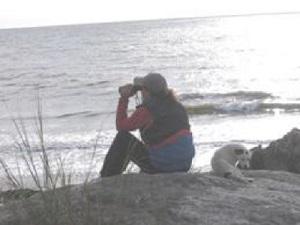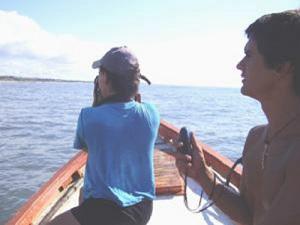Paula Laporta
Other projects
29 Sep 2008
Identifying Critical Areas of Bottlenose Dolphins Populations: A Coordinated Regional Conservation Project
This project intends to study the distribution, residence and social organization patterns of bottlenose dolphins occurring between Cabo Polonio and La Coronilla-Cerro Verde (Uruguay).

The bottlenose dolphin Tursiops truncatus is the only small cetacean that can be observed from shore in Uruguay. However, a substantial decrease in the occurrence of the species has been observed in the estuarine coast since the last 15 years. No systematic studies have been conducted until 2002. Our studies during the last three years indicate that La Coronilla-Cerro Verde (33°38' S-53°24' W) is one of the few zones with high presence of this dolphin in Uruguay. However, there is a lack of information about residence and local movements of the population. This project intends to study the distribution, residence and social organization patterns of bottlenose dolphins occurring between Cabo Polonio and La Coronilla-Cerro Verde (Uruguay).

Currently the Uruguayan government is about to implement a system of protected areas and name La Coronilla-Cerro Verde as the first marine protected area in the country. The first catalogue of photo-identified bottlenose dolphins of Uruguay will be made and compared with the catalogues from southern Brazil, where there is evidence of high mortality due to interactions with fishing operations. These investigations may serve as a basis to develop criteria and guide lines to supervise the protection of this species, before any category is assigned to the area. Furthermore, this study will allow a great advance in the knowledge on this species in Uruguayan waters and will enable us to have a more exact idea of their presence and use of this habitat, as well as the residence patterns of the population, with the possibility of determining if it is a local population, or if we are dealing with the same individuals that occur in neighbouring areas. This is crucial to make joint decisions and to establish integrated conservation steps with the other countries involved.